Key takeaways
- Comedy Central serves as a platform for diverse comedic voices, pushing boundaries and encouraging reflection on societal issues through humor.
- The preparation for comedic performances involves understanding the audience, practicing delivery, and embracing vulnerability to connect authentically.
- Successful comedy acts rely on authenticity, timing, and the ability to read the room, making comedy a dynamic conversation.
- Experiences on Comedy Central highlight the importance of resilience and adaptability, enhancing the ability to connect with a diverse audience.
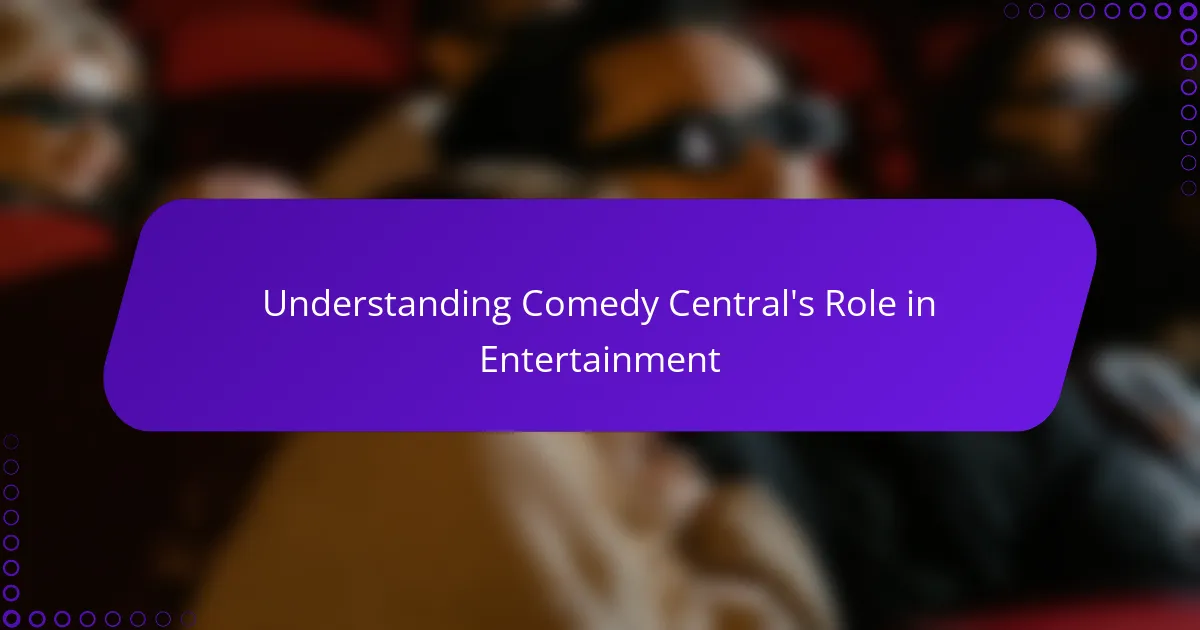
Understanding Comedy Central’s Role in Entertainment
Comedy Central has long been a staple in the world of comedic entertainment, shaping how many of us experience humor on screen. When I first tuned into their lineup, I realized it wasn’t just about making us laugh—it was about pushing boundaries and challenging societal norms through satire. Have you ever noticed how some sketches make you think while cracking up? That’s their genius at work.
What struck me most about Comedy Central is its dedication to showcasing diverse comedic voices. It’s like a melting pot of styles, from stand-up to sketches, giving each comedian a platform to connect with audiences on a personal level. Personally, watching their specials has felt less like passive viewing and more like joining a lively conversation where humor bridges gaps between different perspectives.
In my experience, Comedy Central doesn’t just entertain—it influences pop culture in ways that ripple far beyond its screen. This network’s ability to capture the zeitgeist with sharp wit is something I deeply respect. Isn’t it fascinating how a well-crafted joke can both reflect and shape public discourse? That, to me, highlights Comedy Central’s vital role in the entertainment landscape.
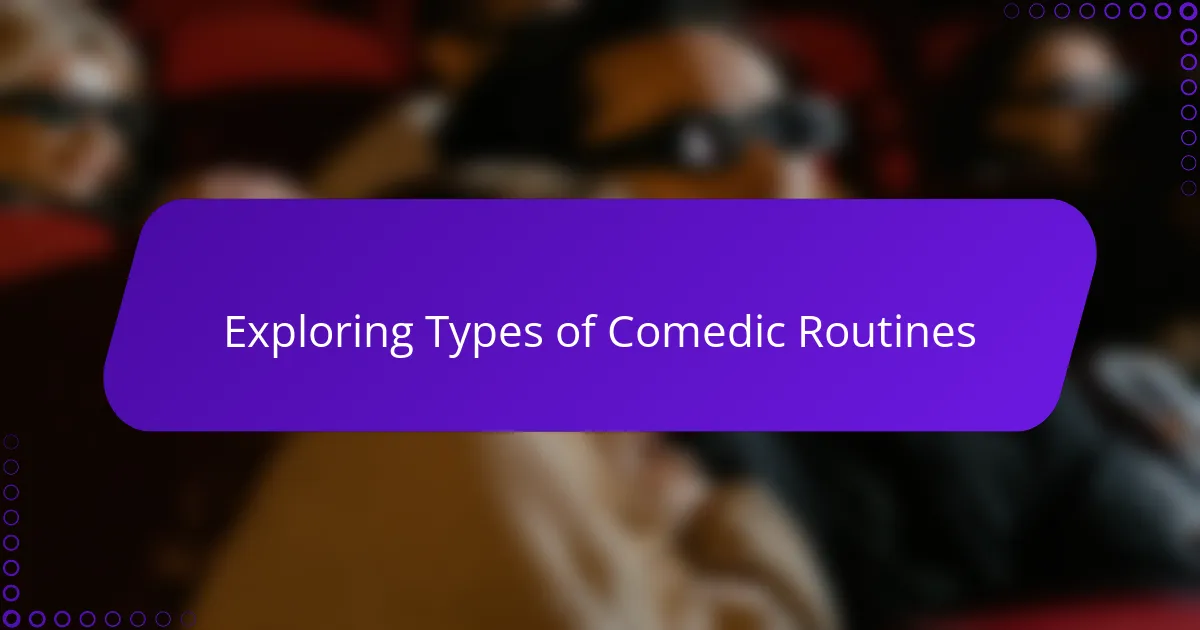
Exploring Types of Comedic Routines
Comedy Central offers such a rich variety of comedic routines that it feels like there’s always something new to discover. From clever stand-up acts that rely on sharp timing and personal storytelling, to absurd sketch comedies that throw logic out the window, each type brings its own unique flavor. Have you ever caught yourself laughing louder during a quick sketch because it surprised you with its unpredictability? That’s exactly what makes these routines so engaging.
What I find especially fascinating is how some routines use satire to hold a mirror up to society. It’s not just about getting a laugh—it’s about making you think, sometimes even uncomfortably so. When I watched certain sketches, I found myself reflecting on issues I hadn’t considered deeply before, all while being entertained. That balance between humor and insight is rare and powerful.
Then there’s the magic of improv-based comedy, where spontaneous reactions and audience interaction create moments you simply can’t script. I remember one show where a comedian’s quick wit turned a simple heckle into a hilarious exchange that had everyone in stitches. It made me realize how improvisation adds an electric energy to comedy, making each performance live and unpredictable in the best way.
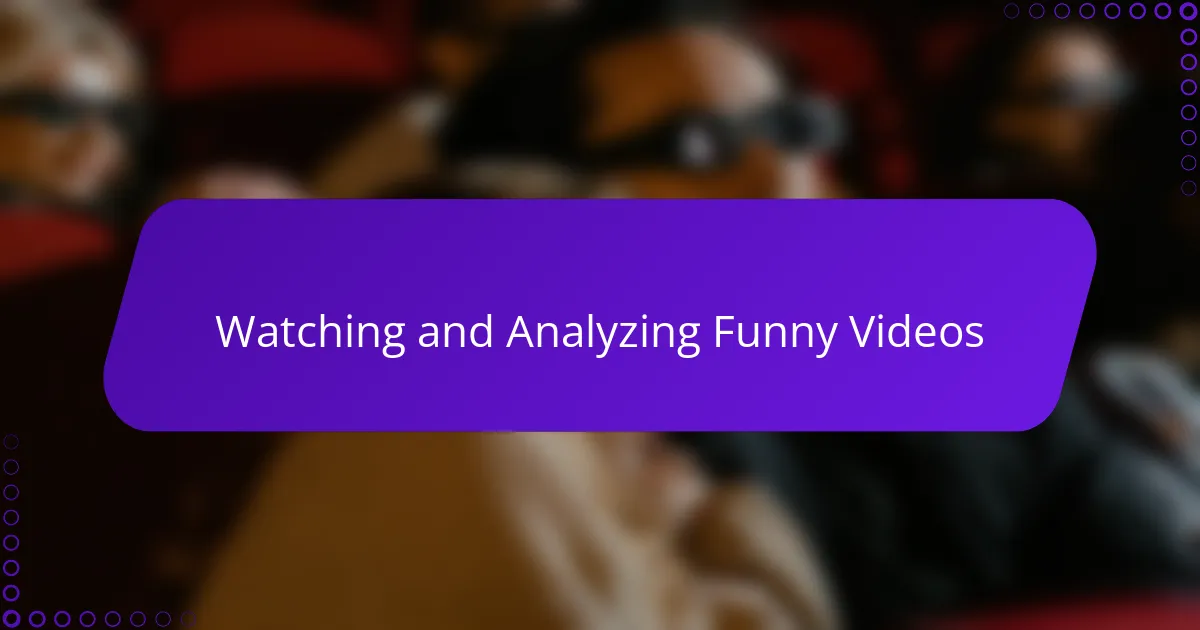
Watching and Analyzing Funny Videos
When I watch funny videos on Comedy Central, I find myself paying close attention to how timing and delivery shape the humor. Have you noticed how a slight pause or an unexpected tone can completely change a joke’s impact? It’s like the comedian is conducting an invisible orchestra, and every beat counts.
Analyzing these videos, I often catch details I missed on the first watch—nuances in expressions or background sounds that add layers to the comedy. Once, a sketch’s subtle sarcasm flew right over me initially, but upon rewinding, I was struck by how cleverly it critiqued a social norm without being overt. That kind of depth makes the viewing experience far richer than just laughing at the surface.
Sometimes, I wonder why certain jokes land better with me than others. Is it personal experience, cultural background, or just mood? Reflecting on this helped me appreciate the complexity behind what makes something funny. Comedy Central’s videos have been a great playground to explore these questions, turning passive viewing into an engaging exercise in understanding humor.
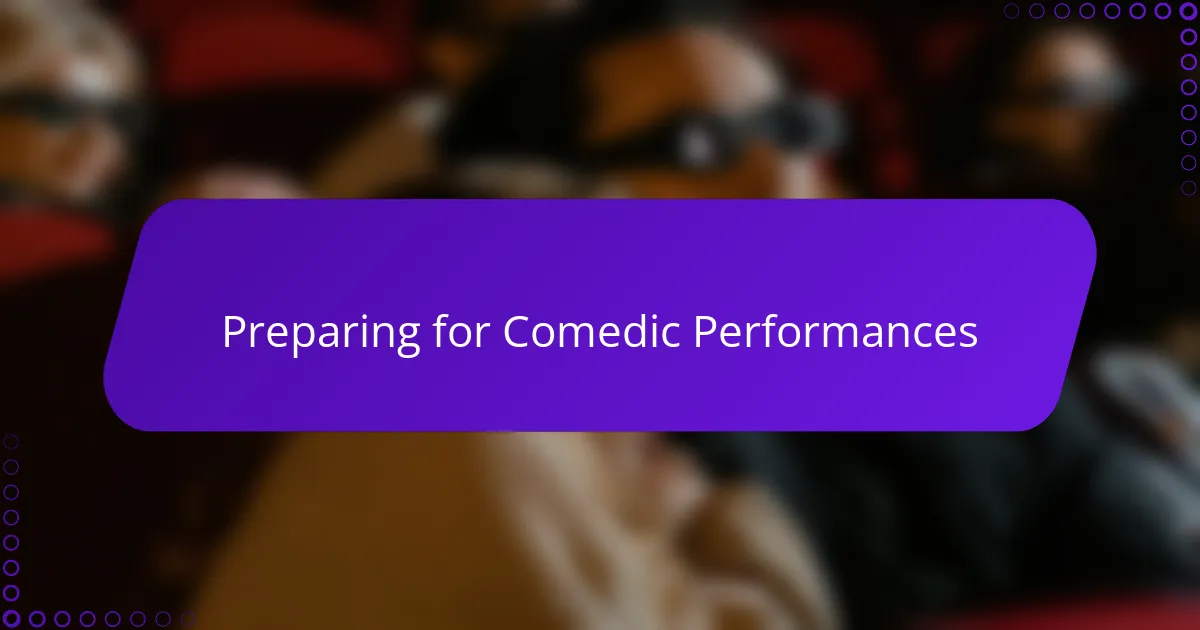
Preparing for Comedic Performances
Preparing for comedic performances is more than just memorizing lines; it’s about understanding your audience’s rhythm and mood. I remember countless hours tweaking a punchline until it felt just right—like tuning a guitar before a concert. Have you ever noticed how even the tiniest change in wording can flip the whole joke from a whisper to a roar?
What I’ve learned is that preparation also means embracing vulnerability. Getting up on stage, you’re exposing your thoughts and quirks, which can be nerve-wracking but also empowering. I’ve found that rehearsing in front of close friends helps me gauge which parts connect and which need refining—it’s like getting a sneak peek of the real show before stepping into the spotlight.
Then there’s the physical aspect: practicing voice modulation, gestures, and timing until they feel instinctive. Every little movement adds flavor to the routine, turning words into an experience. I often ask myself, “Am I saying this joke or performing it?” The more I prepare, the clearer the answer becomes.
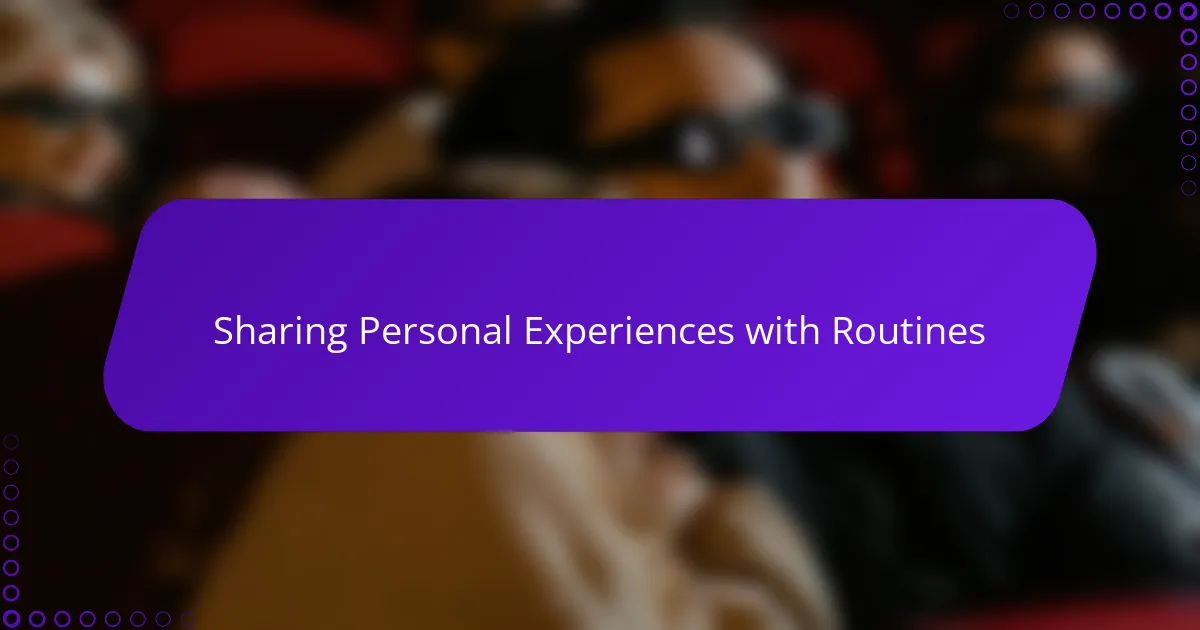
Sharing Personal Experiences with Routines
When I first started sharing my comedic routines inspired by Comedy Central, I quickly realized how personal the experience could be. There’s something vulnerable yet thrilling about putting your humor out there and wondering if it will land. Have you ever felt that mix of excitement and nerves just before a punchline hits the audience? That moment taught me a lot about connecting through laughter on a deeper level.
One routine I shared was actually a reflection on everyday awkwardness, drawn directly from my life. Seeing people relate and respond with genuine laughter felt like a bridge being built, reminding me that humor is often rooted in shared human experiences. It made me appreciate how telling your story, even the small, silly bits, can create such a powerful, communal moment.
Sometimes, I notice that the routines I’m most proud of are the ones where I dared to be a little more honest or unexpected. Comedy Central’s influence pushed me to take those creative risks, and honestly, it’s those moments that stay with me—and my audience—the longest. Doesn’t that tell you something about the courage it takes to be funny?
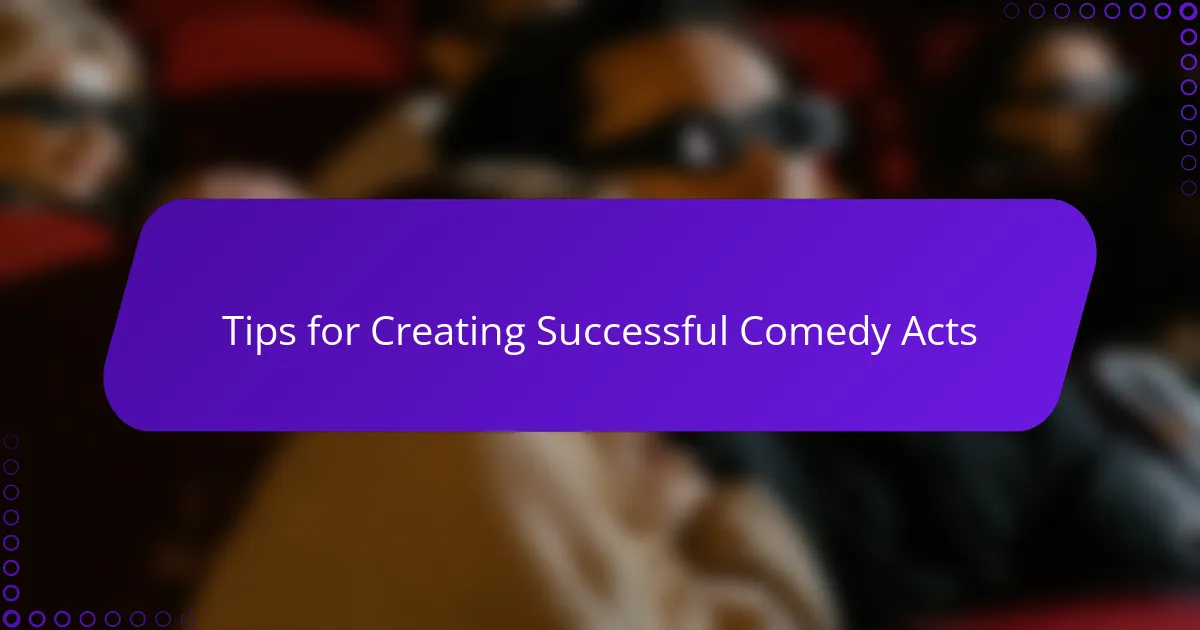
Tips for Creating Successful Comedy Acts
One thing I’ve found crucial when creating comedy acts is the art of authenticity. Have you ever noticed how the funniest moments often come when a comedian shares something true and relatable? When I first embraced my own quirks and stories, my routines became not only funnier but also more meaningful to the audience.
Another tip that changed my approach is focusing on timing—knowing exactly when to pause or speed up. It’s like a dance where every step matters. I remember bombarding my friends with jokes until I finally nailed the rhythm that made them burst out laughing; that trial-and-error phase taught me patience and precision.
Lastly, I can’t stress enough the importance of reading the room. How often have you laughed at something in private but felt the energy shift during a live performance? Learning to adjust on the fly, whether by tweaking a joke or changing delivery, brought new life to my acts and kept audiences hooked. Comedy, after all, is a conversation, not a monologue.
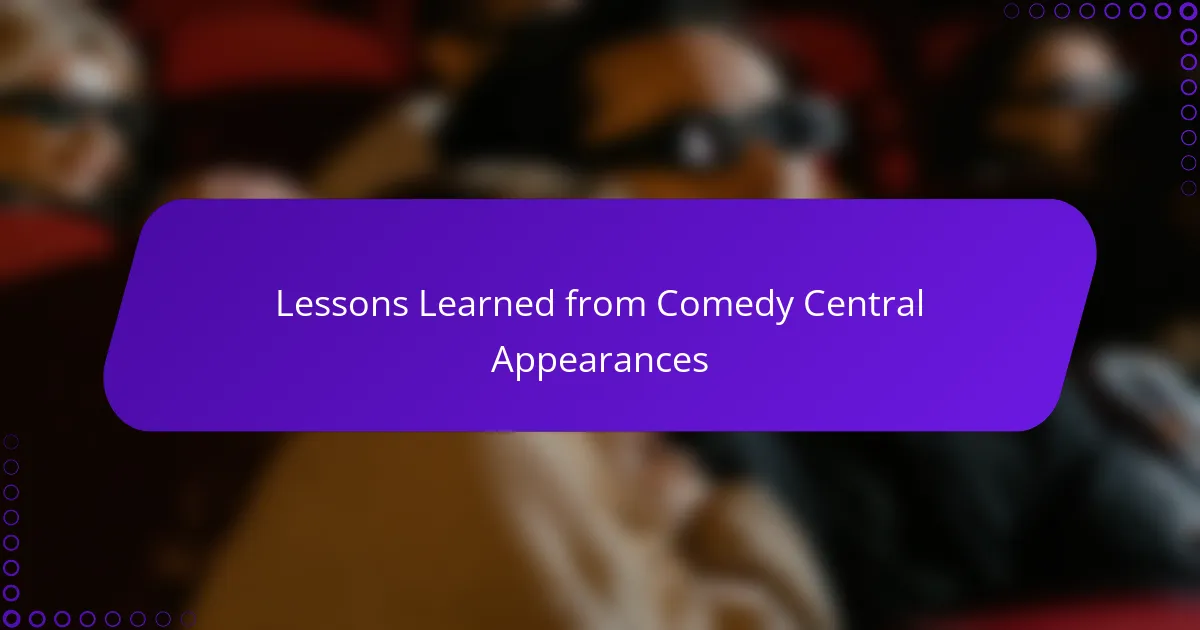
Lessons Learned from Comedy Central Appearances
Appearing on Comedy Central taught me that resilience is as important as punchlines. There were moments when a joke didn’t land as expected, and instead of feeling defeated, I learned to see those experiences as stepping stones. Have you ever felt the sting of silence after a joke? It’s tough, but it pushes you to refine your material and delivery.
I also realized the power of adaptability firsthand. During one taping, I had to pivot quickly when technical issues disrupted the flow. That experience showed me how staying present and flexible can turn a potential flop into a memorable moment. Isn’t it amazing how spontaneity can enhance rather than derail a performance?
Most importantly, Comedy Central appearances deepened my appreciation for connecting with diverse audiences. Each crowd brought its own energy, and I found myself tuning in closely, adjusting the nuances of my routine to resonate better. This taught me that comedy isn’t just about telling jokes—it’s about shared understanding, regardless of background or perspective.
